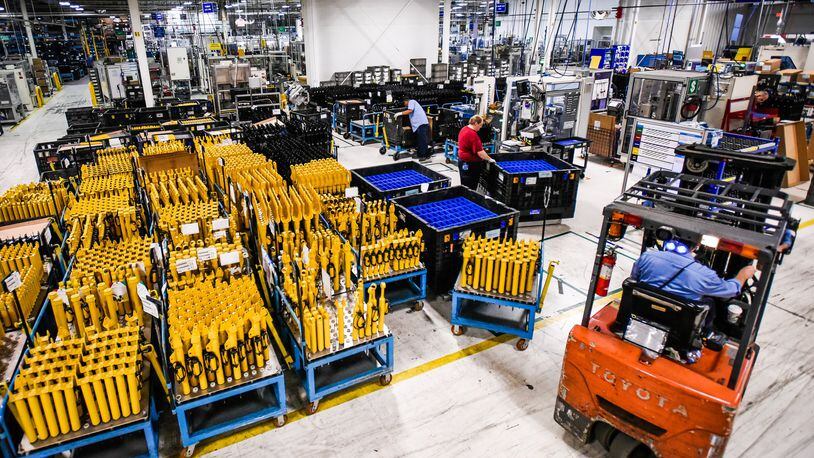The tax credits are responsible for companies committing to creating approximately 4,700 new jobs in Butler County since 2009, while retaining more than 3,200 jobs, according to a Journal-News review of Ohio Development Services Agency data.
“The Job Creation Tax Credit from the state of Ohio is an important economic development tool that boosts Ohio’s ability compete with other states and countries to win jobs and investments for Ohioans,” said Kimm Lauterbach, president and CEO at Regional Economic Development Initiative Cincinnati.
“JCTCs are performance-based incentives, which means a company must first create the jobs before realizing the credit.”
The OTCA reviews economic development proposals brought to the board monthly by entities like JobsOhio and its regional partners.
The Job Creation Tax Credit Program is significant for its ability to protect the state’s investment in business start-up and expansion activities, according to state officials.
Critics say the tax credits are sometimes given to companies that don’t need them, but backers say if the state doesn’t offer such incentives it will continue to lose important job creating businesses to competing states.
As of the end of 2018, the company with the most jobs committed in Butler County under the JCTC program was Barclaycard, which received a 1.753 percent, 7-year job creation tax credit in July 2015 to create 1,500 jobs.
So far the company has created 422 jobs, according to Brandon Saurber, Hamilton’s director of strategy and information.
City Manager Joshua Smith previously told this media outlet having Barclaycard in Hamilton “is a big win for the community, region and state.”
Hamilton has three of the top five commitments to job creation under the Job Creation Tax Credits, including Barclaycard, ThyssenKrupp Bilstein (337 jobs committed) and iMFLUX (221 jobs committed), for a total of 2,058 jobs committed.
“One reason we think the JCTC is such a great incentive is that it is performance-based,” Saurber said. “If the jobs are not created, the incentive is not realized.”
Projects approved by the Ohio Tax Credit Authority enter into a tax agreement summarizing the commitments, according to the Ohio Development Services Agency. Under that agreement, companies must comply with requirements outlined in state law. Todd Walker of the ODSA told this news outlet that tax credit recipients must file annual reports about the company’s progress to determine if performance standards have been met.
If a company is under-performing — or over-performing — the authority can adjust or even terminate the agreement.
Alternatively, a company can even voluntarily surrender its state tax credits. That’s what StarTek Inc. recently did for the tax credits it won in 2015 when it promised to create nearly 700 jobs for Hamilton. Instead, it has about 200 employees in the city today.
The company was approved in 2015 for a 65 percent, seven-year tax credit in exchange for creating 682 positions in Hamilton with a payroll of nearly $15.7 million. Admitting it would fall short of the job figures it predicted under its 2015 agreement with the state, StarTek will not receive any of the $1.3 million in tax benefits.
Job Creation Tax Credits are important, but are “generally not a driving factor in a corporate decision,” according to Barb Wilson, spokeswoman for West Chester Twp.
“Companies are looking for access to talent, common sense regulatory environment and low cost of doing business,” Wilson said, noting those items are what drives West Chester’s growth.
“Incentives cannot make a structurally inadequate site a good site. However, when used strategically, incentives can help a company choose between two similar location options.”
About the Author
